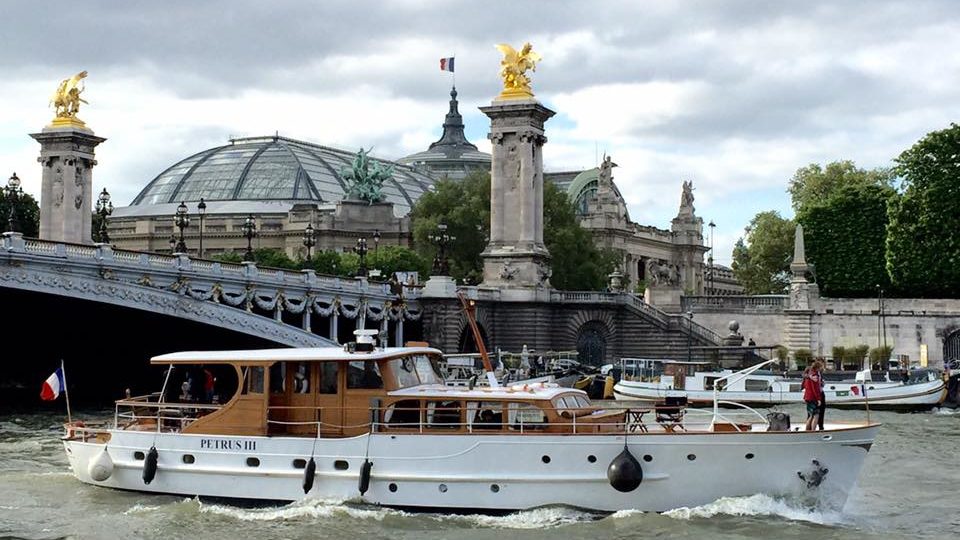Paris By Boat
A cruise down the Seine proves to be challenging; however, it is a rewarding way to reach one of the most beautiful cities to see Paris by Boat.
There are only a few destinations you can cruise to from England’s South Coast that are as glamorous as the Paris. Our plan was to cruise across the Channel down the locks of the Seine to Paris; then leave the boat there over the winter as a chic pied à terre for weekends. There are many attractions to an inland cruise, particularly early or late season, as you are not confined by the whims of the weather. It is also a great way to share your boating passion with friends and family who are less keen on being on the open sea.
Unlike the River Thames, which gradually tightens around you when you enter from seaward, we simply turn to port after a smooth Channel crossing and are immediately in the river. Picking up the narrow channel with Le Havre port to your left, the water is only 5km wide, and the suspension bridge at Tancarville lies 9km ahead, framing the view. We turn to starboard and into the lock to Honfleur. The town inside is bustling and has the salty vibes of a true maritime port; like a French Padstow on an August weekend. Cafés line the picturesque inner harbour, and there’s good cooking and a lively atmosphere to be found at L’Homme de Bois, just off the waterfront. At dinner, the discussion turns to our route. Though closeted from bad weather, river life certainly poses some challenges of its own.
A constant watch is needed because of the river’s winding course and commercial traffic. A whole new set of rules of the road, known as CEVNI, govern your passage, and you need to take an online test. On tight sections, the direction of travel will switch sides to give barges easier corners to navigate. Furthermore, barges carry blue boards, which they can deploy to tell you to pass them on the wrong side as they steam towards you. Strangely, on the Seine, the Left Bank/Right Bank convention from the center of Paris is adopted, rather than north and south. If you’re making for the sea, this might make perfect sense; but, keep in mind that heading upriver, the left bank is on your right and vice versa.
An assortment of books and guides exist, but we came across plenty of inconsistencies. We found the French Fluviacarte books some of the best, with detailed, comprehensive charts of about 8km of river per page. Helpfully, the distances are shown in kilometers, the real way to know where you are on the river. We set our GPS trip at Honfleur and calculate that Paris’s Bassin de l’Arsenal will be on our port side when we hit 355km.
On the first leg, the sea tide and river current mean that the water rises for only three to four hours, while it falls between nine and ten. We want to maximize the push on the incoming tide; however, navigation in the dark is prohibited, and there really isn’t anywhere to moor up before Rouen, some 108km away.
>>Check Out: Paris Travel Guide
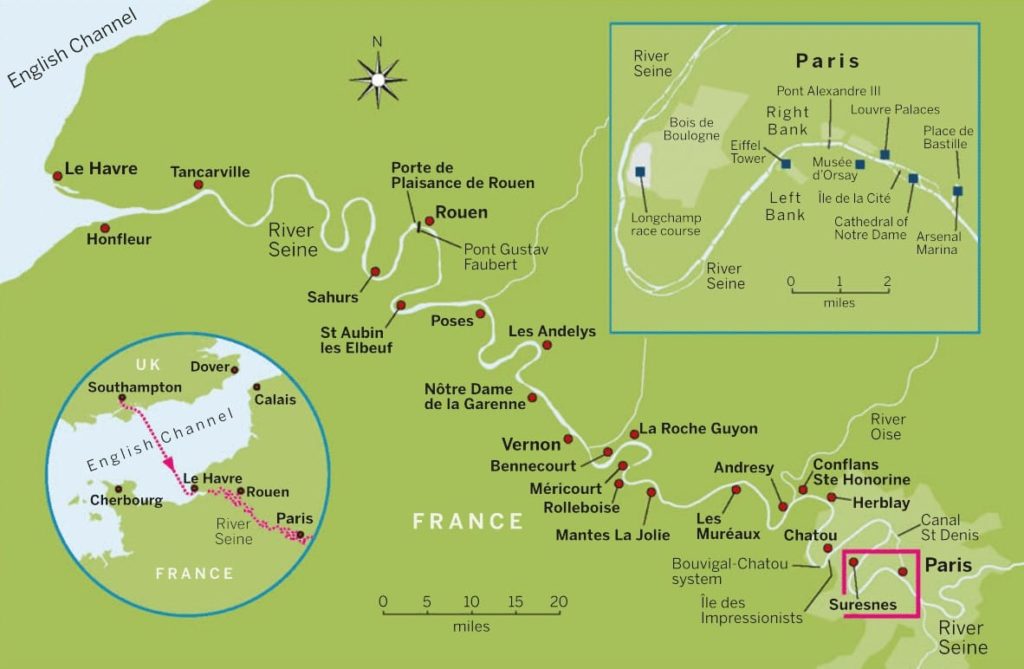
Road To Rouen By Boat
We leave at low water so we will get the big surge towards the end of the leg, and to begin with, the 20-knot speed limit that covers the first 100km seems a fantasy. The other frustration is just how twisty this section of the river is; it’s 60km as the crow flies, nearly double that of the river. By the time we are past the small town of Sahurs, 10km outside of Rouen, we are surfing the incoming tide and passing grand 19th Century houses, which soon give way to the industrial silo and plant of the port of Rouen. It is a Sunday, so there is little activity among the massive gantries. Pretty quickly though, the port gives way to the city; first, the amazing Pont Gustav Faubert, which opens by lifting its central section straight up, then the distinctive cathedral spire which dominates the skyline.
The Porte de Plaisance de Rouen is located on the Île Lacroix, just across from the city center. The river is still flooding when we arrive, though, so there is little time to admire the view until we are very secure on our pontoon in the fast-flowing water. It’s a good spot, secure and with a friendly harbourmaster. The city center is beautiful, and a statue of Claude Monet signals that we are sailing through the heartland of impressionism. For dinner, we chance upon the remarkable La Couronne restaurant, where large portraits declare that everyone short of the Dalai Lama has been a guest.
It’s a quiet and grey start the following day, and we share the river with the occasional barge. St Aubin lès Elbeuf looks like it would make for a pleasant stop and has a tidal harbour accessible two hours either side of high water, but we press on to face our first big challenge. The system of seven massive locks, the first at Poses, but called Amfreville, is about 40 kilometers from Rouen. The locks were built in the 19th Century to allow for craft up to 38.5m, with beams up to 5.05m and a draught of 2.5m, and can take several barges at a time. Our boat has never felt smaller as we nose forward.
Our plan is to fender using a board that protects the boat and also the fenders from the slimy lock sides. Bollards are set in rows into the walls, about 6ft above each other, and we loop lines over them as we rise. The lines are moved one at a time to the next bollard, and in no time, we’ve shot up about 34ft and out of the concrete cavern.
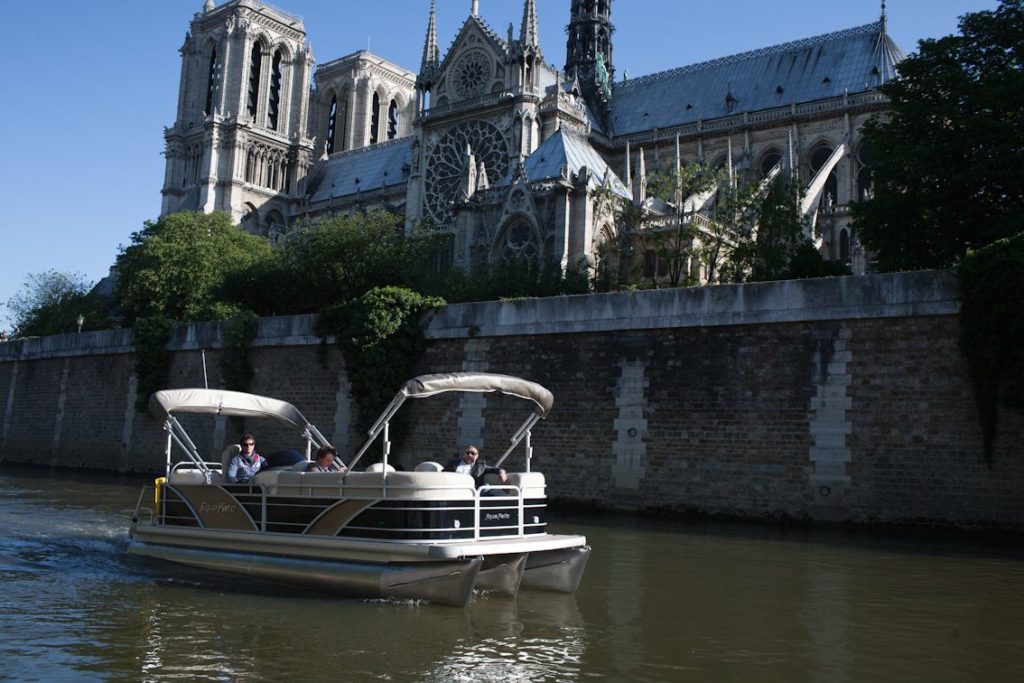
>>Why You Should Rent a Boat in Paris
Locked Out Of Heaven
The difference is immediate and quite startling. Pretty houses line the left bank, their gardens running right down to the water’s edge, and the river is bustling with small craft. Even the vegetation looks softer and more welcoming, and riverside hamlets have long quays where you can tie up. At Les Andelys, a startling castle built by Richard the Lionheart in 1196 to protect Rouen, overlooks a bend in the river. We press on through to our next lock at Notre Dame de la Garenne. Our technique is improving, but this lock has doors that lift up and drop, guillotine style, which are rather scary.
On the non-tidal river, the current runs downstream at around 2 knots, so progress is slower than heading for the sea. We try to keep up to around 10km per hour, and at this leisurely pace, steering is on autopilot. Confusion between our various guide books suggests there may or may not be a harbour tucked behind an island in Bennecourt 20km from the lock. In a way, they were both right – there is a pontoon, but it’s abandoned. Vernon, a few kilometers downriver, would have been a much better berthing spot, but with night drawing in, we make do with our dilapidated lot.
We slip our lines at dawn; the early morning sun is spectacular over the becalmed waters, and we watch the mist lift off the rolling hillsides. Our first lock of the day goes perfectly, but tying up to an aluminum barge landing stage is a big mistake; lots of fendering is required as the structure is very hard and very sharp.
There are no croissants to be had in Rolleboise, our first breakfast stop, so we cruise towards pretty Mantes la Jolie. It has a long quayside with a proper edge to fender against and, more importantly, several delicious bakeries. Further on, we see the Darse Daniel Dreyfous Ducas. A port for barges and huge warehouses, and at Les Mureaux, a Renault car factory and European Space Agency warehouse; both of which still load their products on to barges for transportation today.
Conflans-Sainte-Honorine stands on the Seine and the Oise and has long been a capital of waterways transport with hundreds of barge moorings along its quays. One of our guide books rather sniffily suggests it would be a bit rowdy for a night stop; personally, I think it looks fun. Sadly, our timings don’t work, and we are unable to stop.
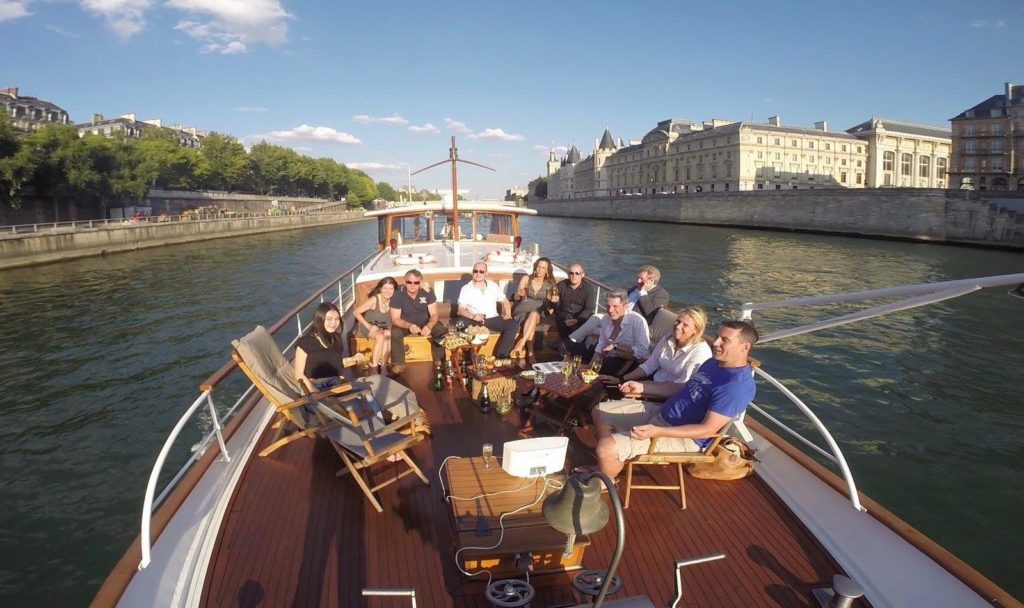
>>Why you Should Take a Canal Cruise in Paris
First Impressions
We chance upon an unused ferry dock at Herblay and decide it’s an idyllic lunch spot so set about devouring some gooey French cheeses and light red wine. The river here is delightful, with trees lining both banks and white stately houses breaking cover between the foliage. Next up is the Bougival-Chatou system, where linked islands in the river mean there are two routes. We take the Bas de Marly on the promise of being able to moor at the so-called Halte de Plaisance de Bougival. Again, our books don’t agree, but this time there really is nothing for us to moor to.
Thankfully, a little further on, we find a perfect overnight stop at the Halte Fluvial de Rueil Malmaison. Opposite is the Île des Impressionistes and the Maison Fournaise. Here, Renoir painted his famous Luncheon of the Boating Party in 1881; depicting his friends enjoying a meal by the river. The house is now a museum and restaurant, so we do the same, admiring a view that now includes our boat.
>>Also Read: Barge Cruises in France
Eiffel Tower
It is morning rush hour in the suburbs of Paris as we make our way towards the city. Traffic clogs each road bridge, but the river remains blissfully calm. Our final lock is at Suresnes; just 17km from the middle of Paris and adjacent to the Longchamp Racecourse and the Bois de Boulogne; then the unmistakable Paris skyline looms in front of us. We could have taken the Canal St Denis to cut out the big bend and the city center; but the many locks mean it doesn’t save time, and anyway, who would want to miss out on this bit?
Suddenly the Eiffel Tower is on our right. The barges are replaced by the famous Bateaux Mouches, and the sights come up thick and fast. The Pont Alexandre III, with its gold statues, is perhaps the most impressive; then we see the famous Musée d’Orsay on the left bank (which is our right) and the incredible Louvre palace opposite. The quaysides are low to the water along the banks and around the Île de la Cité. Because there is no tide, the feel is completely different from the Thames. We get a great view of the west end of Notre Dame cathedral and its flying buttresses; then, in no time, we are at the narrow lock at the entrance of the Bassin de l’Arsenal on the Right Bank.
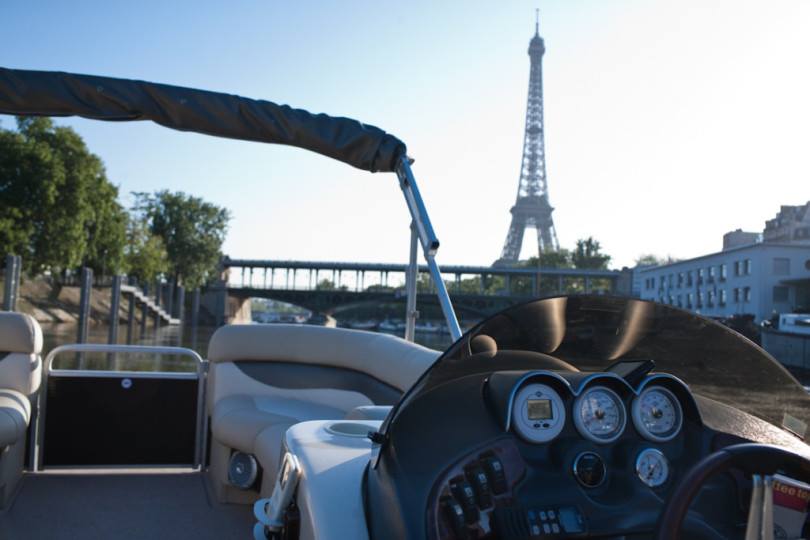
>>Also Read: Most Beautiful Bridges In Paris
The Arsenal Marina has excellent facilities for yachts (although berths for larger craft might be rafted up), and the lively Place de Bastille is at the north end, its huge column that commemorates the 1840 revolution dominating the skyline. A garden borders the Arsenal Marina, which is used as a park by Parisians and has a beautiful rose garden and relaxing vibe.
The city center is a €10-15 taxi ride or walkable, so you are able to explore at will. The joys of Paris are too many to list; however, I would highly recommend the impressionist rooms on the fifth floor of the Musée D’Orsay. From Rouen cathedral to Poplars along the Seine, much of our journey is preserved in oil paint within these four walls.
The efficiency of the Eurostar means I’m back in London in a fraction of the time it took to get to Paris, but the Seine is a magical waterway, where the journey is as much a part of the adventure as the destination and this route is a fantastic alternative to the usual Paris city break and leaves you with even better memories.
>>Must-See Cathedrals in Paris and France
Staying On The Seine
Honfleur +33 (0)231 988
713. Costs €35, tied up to the outer harbour wall.
Rouen
Halte Nautic +33 (0)235 073 394.
On Île Lacroux, Bras Pre du Loup. Costs €22, including water and electricity.
Bennecourt
Free to berth, but no facilities.
Halte Fluvial de Reuil:
+33 (0)147 323 575. Free to berth.
Bassin de l’Arsenal, Paris:
+33 (0)143 413 932.
Costs from €10 inc water and electricity.
Books
Inland waterways of France
David Edwards May, Imray 2010
River Seine Cruising Guide
Derek Bowskill, Imray 1996
La Seine Aval du Havre a Paris
Guide de Navigation Fluviale 1, Éditions de L’Écluse 2010
Fees
For boats over 5m in length, boaters have to pay for a license from the French inland waterways to use the system. The fee is calculated from the length and beam of the vessel, and the duration of your stay on the waterways. The license should be displayed on board. For more info, you can check French Waterways.
